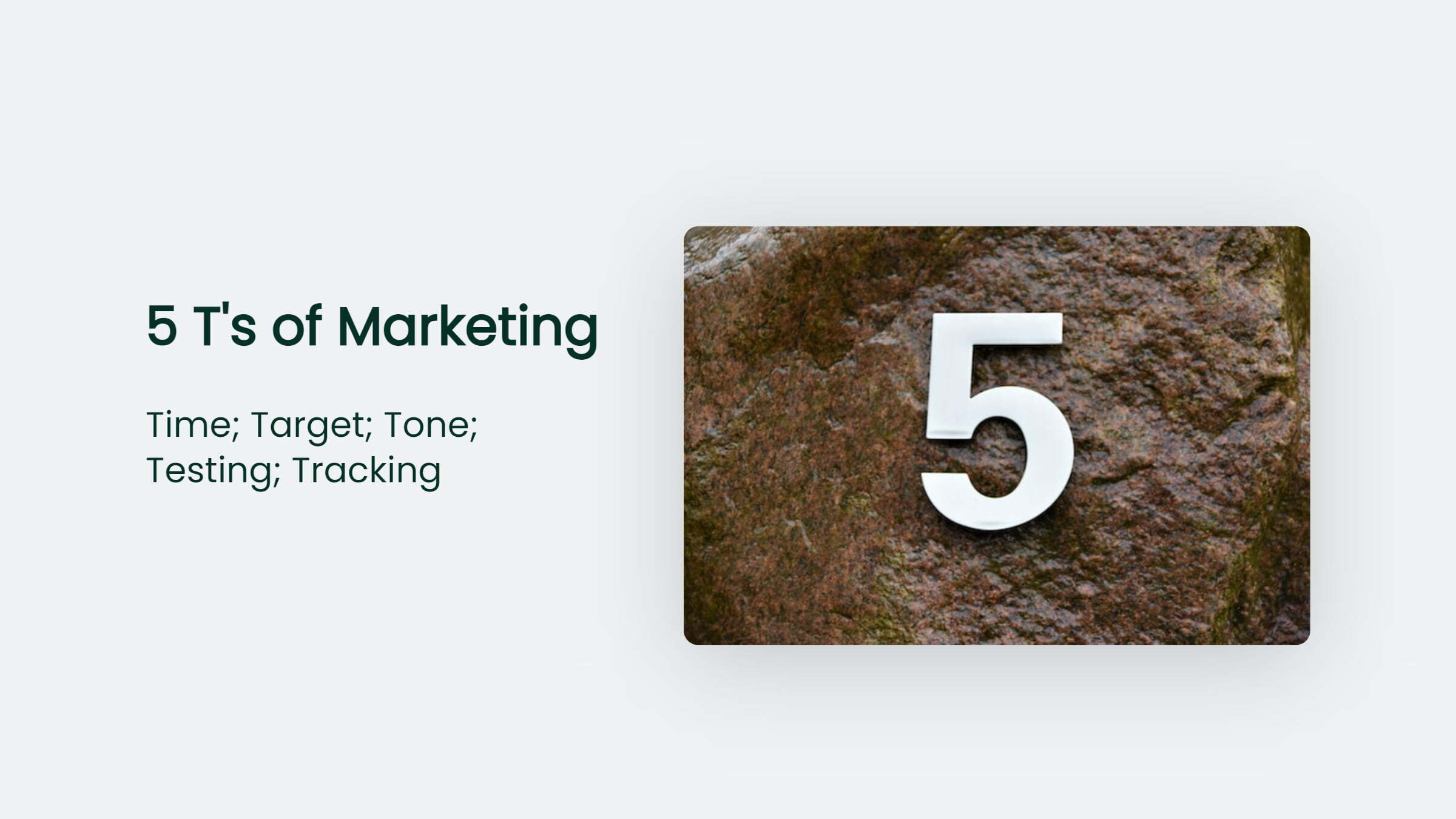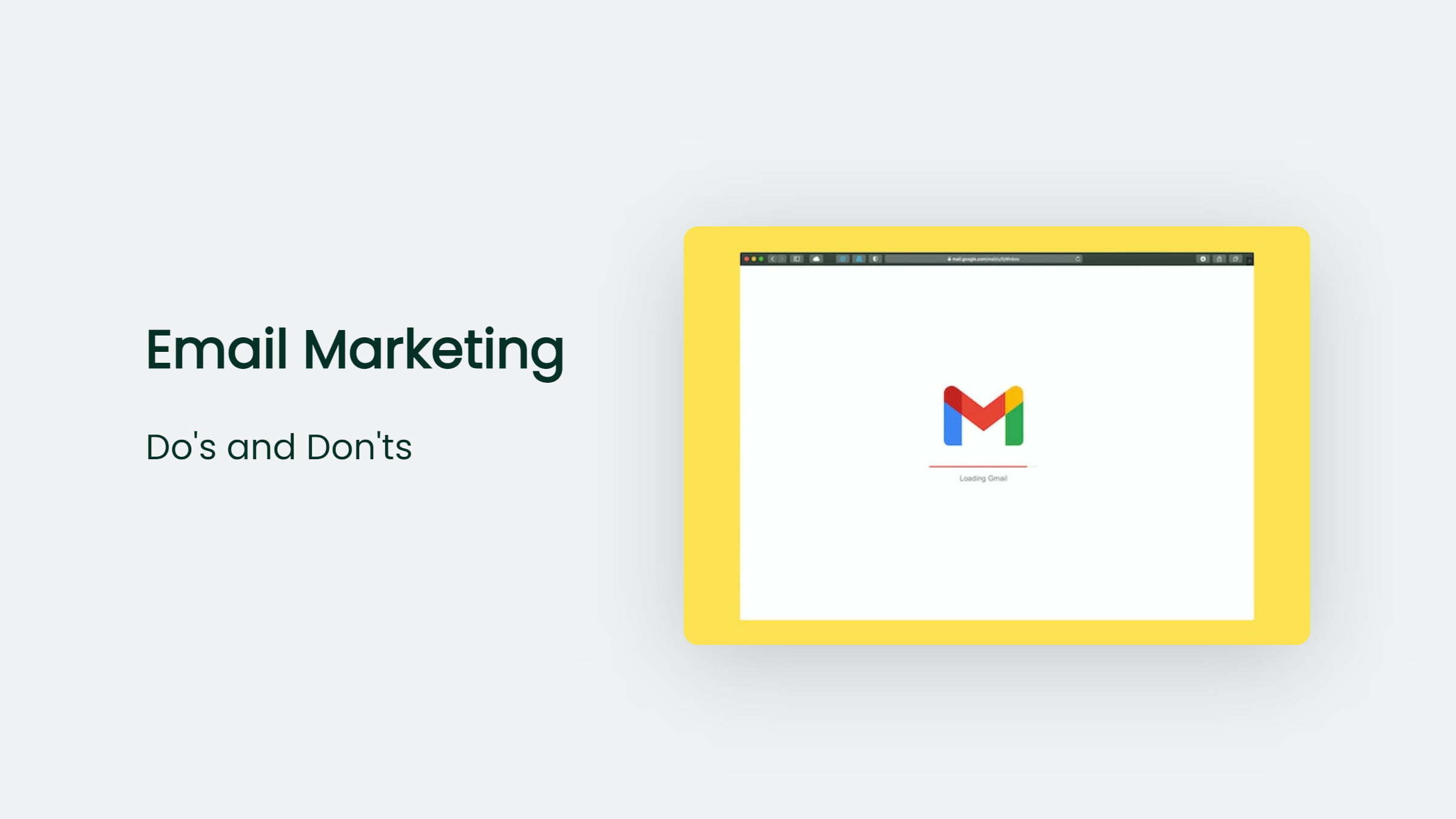

Do’s and Don’ts of Email Marketing Everyone Should Know to Boost their Click-Through-Rates in 2023

As Seen On
Email marketing is an essential part of any business, regardless of size. But what worked in the past might not work in 2023.
In this post, we’ll look at the do’s and don’ts of email marketing, so you can ensure your campaigns are successful long into the future.
So without further ado, let’s get started!
Table of Contents
What is Email Marketing?
Email marketing is a form of direct marketing that uses electronic mail to communicate commercial or fund-raising messages to an audience.
In its broadest sense, every email sent to a potential or current customer could be considered email marketing.
However, the term is usually used to refer to: Sending emails to enhance a merchant’s relationship with its current or previous customers and to encourage customer loyalty and repeat business.
Sending emails to acquire new customers or convincing current customers to purchase something.
Email marketing is one of the most effective ways to stay connected with your audience while promoting your product or service.
It allows you to reach many people with minimal effort and is a great way to build relationships with your customers.
Plus, it’s relatively inexpensive compared to other forms of marketing. So if you’re not already doing email marketing, you should definitely consider it!
The benefits of email marketing:
Email marketing is one of the most effective ways to reach your customers. Here are three benefits of email marketing that will help you increase your open rates and click-throughs.
First, email marketing lets you send highly personalized messages to your subscribers.
You can segment your list by interests, demographics, or even purchase history and send tailored messages more likely to resonate with each segment.
Second, email marketing allows you to track your results in real-time. You can see how many people opened your email, clicked on the links, and even unsubscribed.
This data allows you to fine-tune your approach and ensure you get the most out of your email marketing efforts.
Finally, email marketing is incredibly cost-effective in reaching your target audience. Unlike other marketing channels, email has a high ROI and is affordable.
The 5 T’s of Email Marketing:

When it comes to email marketing, there are a few key things to keep in mind to ensure success. First, always remember the 5 T’s: Timing, Targeting, Tone, Testing, and Tracking.
(*The 5 T’s mentioned here are our take on the term) (for the traditional version click here)
Timing:
Anyone who’s ever opened their inbox to a sea of marketing emails knows that timing is everything. Send your message too early, and it’ll get lost in the noise; wait too long, and your customer might have already moved on.
To find the sweet spot, look at your customers’ behaviour patterns and send your emails accordingly. If unsure when they’re most active, start with a few different times and then track open rates to see what works best.
Targeting:
Targeting: When it comes to email marketing, targeting is everything. That’s why it’s essential to segment your list and only send emails to those interested in what you have to say. Otherwise, you’re just spamming people, and that’s a surefire way to get people to hit the unsubscribe button.
Tone:
The tone of your email marketing should match the tone of your brand. Your emails should reflect that if you’re a fun and playful brand. But if you’re a serious and professional brand, your emails should be too. The last thing you want is your email to come across as tone-deaf.
Testing:
Testing is critical to email marketing success. After all, how can you know if your message resonates with your audience if you don’t measure the results?
A/B testing allows you to try out different subject lines and content to see what gets the most response. Once you know what works, you can fine-tune your approach for maximum impact.
And finally, we come to the T that everyone loves: tuna sandwiches! Just kidding – although we recommend including a tasty sandwich recipe in your next email marketing campaign (trust us, people will love it). The last T stands for…
Tracking:
Tracking is another essential T in email marketing. By using tracking tools, you can see who opens your messages and who clicks on the links inside them. This information can be invaluable in helping you adjust your strategy on the fly and ensure that your campaigns are as successful as possible.
Do’s and Don’ts of Email Marketing

Email marketing can be a great way to connect with potential and current customers.
However, it can also be a significant source of frustration for customers who receive too many emails and for businesses that don’t see the results they’re hoping for.
If you’re thinking about starting an email marketing campaign, or if you’re already using email to reach out to your customers, here are a few things to keep in mind.
Do’s of Email Marketing:
Keep these in mind for a successful email marketing campaign.
Do keep your emails focused and concise.
In today’s fast-paced world, we all appreciate a good email that gets to the point. No one wants to wade through paragraphs of text just to find out what you’re trying to say.
So when you’re crafting your next marketing email, remember to keep it focused and concise. Your readers will thank you for it!
Of course, that doesn’t mean you should skimp on the details. Include all the essential information like your offer, call to action, and contact information.
But resist the urge to include too much extra information – that’s what your website is for. Keep your email focused, and you’ll keep your readers engaged.
Do personalize your emails as much as possible.
One of the most important things you can do when crafting an email marketing campaign is to personalize your emails as much as possible.
Gone are the days when a generic “Dear sir or madam” would suffice. Your subscribers want to feel like you’re speaking directly to them, so take the time to use their names in your subject line and throughout the body of your email.
You should also segment your list to send relevant content to specific groups of people. It will ensure that everyone feels like they’re getting something tailored just for them, and it will also help improve your open and click-through rates. Also, you just might get new subscribers!
Do use images and other visual elements sparingly.
It’s no secret that people are visual creatures. We love looking at pictures and are more likely to remember something if an image accompanies it.
However, when it comes to email marketing, less is often more. While it can be tempting to pack your message with images and other visual elements, doing so can detract from your overall message.
Too many visuals can be overwhelming, making your email more likely to end up in the spam folder.
So if you want your email marketing campaign to succeed, stick to a few well-chosen images and leave the rest to the imagination.

Do test your subject lines before sending out your email campaign.
All th marketers should know that any good email campaign starts with a great subject line. After all, if your subject line doesn’t grab your audience’s attention, your email will likely get lost in the shuffle.
However, crafting the perfect subject line can be tricky. That’s why testing out a few different options is essential before settling on the final version.
By testing different subject lines, you can better understand what works and what doesn’t. And in the end, that can mean the difference between a successful campaign and one that falls flat.
So, if you want to make your next email marketing campaign a success, start with a great subject line – and don’t forget to test it first!
Do make sure your email is mobile-friendly.
In this day and age, there is no excuse for not having a mobile-friendly email. People are always on their phones, and if your email isn’t optimized for mobile, you’re missing out on many potential customers.
Make sure your email is readable on a small screen, and the link to your website is easy to click. In addition, avoid using large images or long blocks of text, as they can be challenging to scroll through on the phone.
By following these simple tips, you can ensure that your email marketing campaign is accessible to everyone.
Don’ts of Email Marketing:
Don’t send emails too frequently.
Like most people, you probably get a lot of emails. You may even feel like your inbox is constantly overflowing.
As a result, it’s important to be strategic about the emails you send. If you bombard your contacts with too many messages, they’re likely to tune out, or your existing customers might want to unsubscribe altogether.
Instead, focus on quality over quantity. Send interesting and informative emails that will capture your reader’s attention.
And most importantly, don’t forget the power of the Subject line. Ensure your message is clear and concise, so your contacts will open and read your email.
After all, what good is a well-crafted message if no one ever sees it?
Don’t buy or rent email lists.
As an experienced email marketer knows, one of the cardinal rules of email marketing is: don’t buy or rent email lists.
Not only is it a waste of money to purchase someone else’s email list, but it’s also likely to do more harm than good.
After all, you have no idea whether the people on that list want to receive your emails. Worse, they may mark your messages as spam, damaging your sender reputation and getting you blacklisted by ISPs.
So save yourself the trouble and build your list the old-fashioned way: by providing valuable content that people want to receive.
Don’t include more than one call-to-action in each email.
If you’re like most people, you probably get a lot of emails every day. And if you’re like most people, you probably delete most emails without reading them.
So, if you’re going to take the time to write and send an email, you want to ensure it’s effective, right?
Here’s a tip: don’t include more than one call-to-action in each email.
Why?
Because people are busy and they don’t want to have to think about what to do next. They just want to be able to scan your email and take the desired action quickly.
So, if you want people to read your emails, make it easy for them by including only one call-to-action. Otherwise, they’re likely just to hit the delete button.

Don’t forget to proofread your emails before sending them out. Nothing says unprofessional, like a typo.
Before hitting send on your next email campaign, proofread your message! Always double check.
There’s nothing worse than sending an email full of typos and grammar mistakes. Not only does it make you look unprofessional, but it can also deter people from opening and reading your emails in the future.
So take a few minutes to proofread your emails before sending them to the world, and save yourself the embarrassment of sending out a poorly written message.
Don’t send attachments without warning.
You’ve probably been receiving an email attachment from a well-meaning friend or family member that contained a virus.
Or, maybe you’ve got an email with an attachment too large to download. Either way, it’s not a pleasant experience.
That’s why you should never send attachments without warning. If you must send an attachment, make sure to include a note in the body of the email letting the recipient know what to expect.
And, if possible, send a smaller version of the file that can be easily downloaded. After all, no one wants to open their inbox and find a surprise attachment waiting for them.
By following these simple tips, you can ensure that your email marketing campaign is successful. Just remember to keep your messages relevant, concise, and mobile-friendly, and you’ll be on your way to success.
Frequently Asked Questions:
How often should I send emails?
It depends on your audience and goals, but in general, it’s best to err on caution and not overload people’s inboxes. Once a week or once every other week is usually a good frequency for most businesses.
What’s the best day of the week to send emails?
Again, this will depend on your audience, but generally, Tuesdays and Thursdays are the best days for email marketing.
How many emails should I include in my campaign?
Again, this will depend on your goals and your audience, but as a general rule of thumb, it’s best to keep your email campaigns short and sweet. 3-5 emails is usually a good number to aim for.
How do I know if my email marketing campaign is successful?
You can look at a few key metrics to gauge the success of your email marketing campaign, including open rate, click-through rate, unsubscribe rate, and complaint rate. If you see good results in these areas, your campaign will likely succeed.
The Bottom Line:
Even though email marketing may seem like an old-fashioned tactic, it’s still one of the most effective ways to reach your customers. By following the tips we’ve outlined, you can ensure that your messages stand out from the crowd and drive results for your business. Be sure to use these tips in your future email campaigns.
But do you want a professional to help you with your email campaigns? Contact us today to take your email marketing to the next level.
Konger
Up until working with Casey, we had only had poor to mediocre experiences outsourcing work to agencies. Casey & the team at CJ&CO are the exception to the rule.
Communication was beyond great, his understanding of our vision was phenomenal, and instead of needing babysitting like the other agencies we worked with, he was not only completely dependable but also gave us sound suggestions on how to get better results, at the risk of us not needing him for the initial job we requested (absolute gem).
This has truly been the first time we worked with someone outside of our business that quickly grasped our vision, and that I could completely forget about and would still deliver above expectations.
I honestly can't wait to work in many more projects together!
Disclaimer
*The information this blog provides is for general informational purposes only and is not intended as financial or professional advice. The information may not reflect current developments and may be changed or updated without notice. Any opinions expressed on this blog are the author’s own and do not necessarily reflect the views of the author’s employer or any other organization. You should not act or rely on any information contained in this blog without first seeking the advice of a professional. No representation or warranty, express or implied, is made as to the accuracy or completeness of the information contained in this blog. The author and affiliated parties assume no liability for any errors or omissions.

